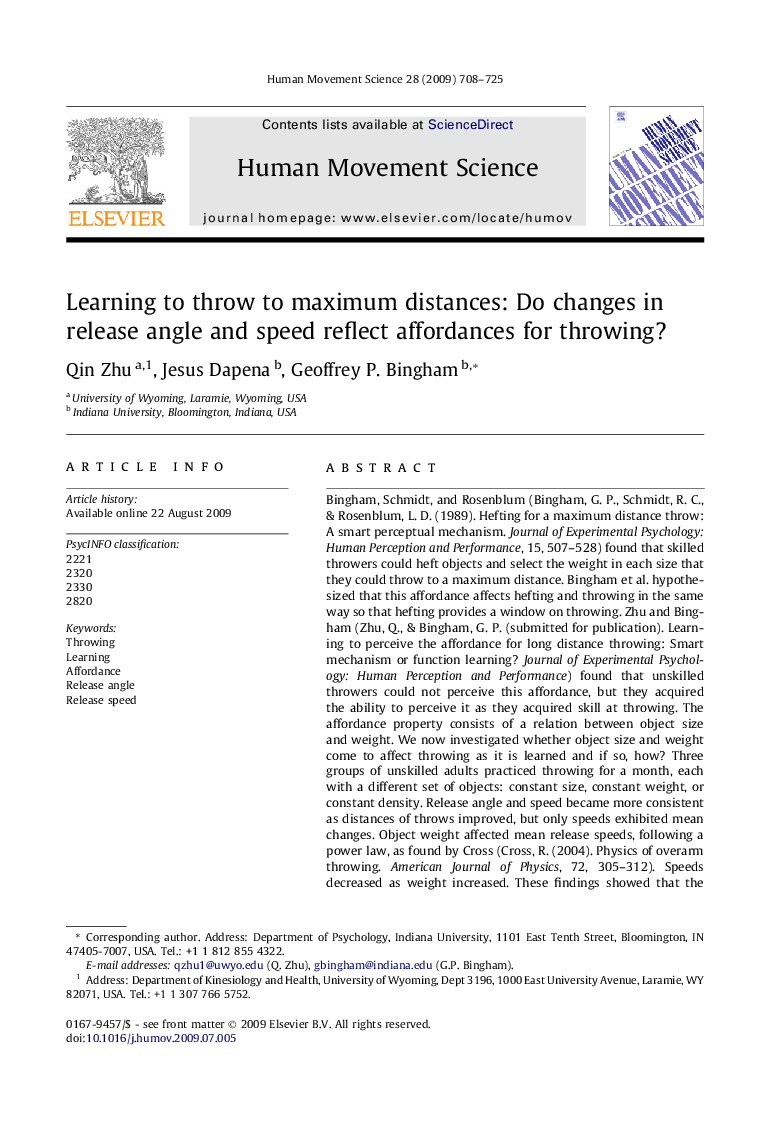| Article ID | Journal | Published Year | Pages | File Type |
|---|---|---|---|---|
| 928752 | Human Movement Science | 2009 | 18 Pages |
Bingham, Schmidt, and Rosenblum (Bingham, G. P., Schmidt, R. C., & Rosenblum, L. D. (1989). Hefting for a maximum distance throw: A smart perceptual mechanism. Journal of Experimental Psychology: Human Perception and Performance, 15, 507–528) found that skilled throwers could heft objects and select the weight in each size that they could throw to a maximum distance. Bingham et al. hypothesized that this affordance affects hefting and throwing in the same way so that hefting provides a window on throwing. Zhu and Bingham (Zhu, Q., & Bingham, G. P. (submitted for publication). Learning to perceive the affordance for long distance throwing: Smart mechanism or function learning? Journal of Experimental Psychology: Human Perception and Performance) found that unskilled throwers could not perceive this affordance, but they acquired the ability to perceive it as they acquired skill at throwing. The affordance property consists of a relation between object size and weight. We now investigated whether object size and weight come to affect throwing as it is learned and if so, how? Three groups of unskilled adults practiced throwing for a month, each with a different set of objects: constant size, constant weight, or constant density. Release angle and speed became more consistent as distances of throws improved, but only speeds exhibited mean changes. Object weight affected mean release speeds, following a power law, as found by Cross (Cross, R. (2004). Physics of overarm throwing. American Journal of Physics, 72, 305–312). Speeds decreased as weight increased. These findings showed that the affordance was not reflected directly in throwing performance and the hypothesis of Bingham et al. (1989) about how the affordance is perceived was not supported. An alternative account is now proposed.
